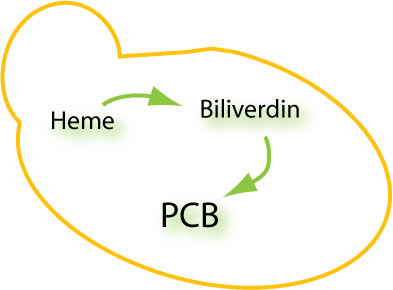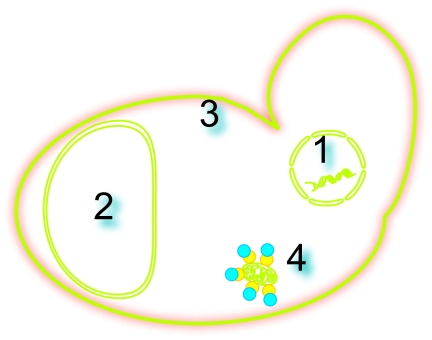Team:MIT/Projects
From 2009.igem.org
Project 1: Metabolic Engineering of PCB Synthesis in Yeast
|
|
Brief DescriptionOur project uses the PhyB-PIF3 system to create this fast-reversible switch. Phycocyanobilin (PCB) is a chromophore necessary for this switch to work. PCB is the protein that senses light and changes its conformation to allow PhyB to bind to PIF3, as well as unbind. In its inactive conformation, noted as the Pr conformation, can absorb red light and change its conformation to the active conformation, noted as the Pfr conformation. In the active conformation, PCB can absorb far-red light to revert back to the inactive conformation. We wanted to make this process self-sufficient. Therefore if the yeast was able to synthesize the PCB itself, it would not have to always be supplemented.
|
Project 2: Rapid & Reversible Protein Localization using PhyB-PIF3 System
|
|
Brief DescriptionOur goal is to engineer a system that adopts the PhyB-PIF3 switch to control protein localization within the cell. We plan to have either PhyB or PIF3 constitutively anchored to the target desired (e.g. mitochondrial membrane, nuclear membrane, vacuole etc). The other will then be bound to our protein of interest(fluorescent protein) and will diffuse within the cell. When pulsed with red light, the traveler protein will localize to the anchored protein and consequentially the target. This in turn will cause the cell to fluoresce due to proton transfer between the fluorescent proteins tagged to PhyB and Pif3. . |
 "
"

